If you’ve not yet discovered the Haute Maurienne valley, with its six ski resorts, then let us introduce you to your new favourite ski area; excellent value, easy access, authentic mountain atmosphere in the French Alps.
How To Get There
By Air
Chambery is closest, an hour-and-a-half drive away (to Val Cenis, mid-way up the valley). But during winter, Chambery flights are mostly confined to weekends, so if you plan to travel out of the traditional Saturday-Saturday ski week, the closest airport is Lyon, 2.5 hours drive away. Grenoble (2h), Turin (2h) and Geneva (3h) are also in range.
By Train
At the entrance of the valley is Modane town, with a well-connected train station. Trains from Lyon take two-to-three hours, and from Grenoble indirect trains take from 2h20 (though more likely 2h40).
Best of all is how easy Modane is to reach by train from Paris. Your best bet is the international service to Milan; in four hours and 10 minutes you can arrive from Paris Gare du Lyon by TGV without changing train. (This service was paused during Winter ’23/24 due to a landslide but will recommence in Autumn ’24 in time for the ski season). Italian trains (rather than French services) also tend to be a fair amount cheaper.
If travelling by Eurostar into Gare du Nord, and you don’t fancy making the switch across Paris by taxi or underground/RER, there is a train from Gare de Nord to Modane, with a change at Chambery, that takes around six hours with French train company SNCF.
Driving
The drive from Calais to Modane, at the mouth of the Haute Maurienne valley, takes around nine hours.
From Modane, at the start of the Haute Maurienne valley, to Bonneval-sur-Arc at the top of the valley (nearest the the foot of the Col de l’Iseran) is 42km.
Public transport
Buses run regularly up and down the valley between resorts, ferrying skiers between villages as well as locals to and from work and school. Buses are free for anyone with a lift pass, or €10 for a week’s bus pass.
The biggest ski resort centre is Val Cenis, with three main areas along 8km of road, and bus stops along the route.
Haute Maurienne’s Pros and Cons
Pros
- Val Cenis is the first resort in Europe to offer bad-weather insurance. When you buy your ticket you have the option to add in weather insurance at an 8% cost. What this gives you is assurance that if it rains or snows (yes, snowing is included) for three hours or more in a day, you get the cost of your day’s lift pass back – no questions asked. In fact, the lift company sends you the link directly by phone or email for you to request it back if you so wish, and the refund is made instantly. Even better, you still get to use the lift pass to ski that day, even if you intend to claim back the money. It’s hard to see what the resort gains from this, but for skiers (and especially beginners who might want to avoid learning in heavy snow) it’s a real win-win.
- Lift passes here come in cheaper (by at least €50 a person for six days) than many other big name ski areas – during the ’23/24 season, a six-day Val Cenis lift pass (the most expensive in the Haute Maurienne valley) cost €221, compared to its closest French neighbours: Val d’Isère (€396), Serre Chevalier (€315), Three Valleys (€375). It certainly makes a difference to the ski budget when planning for a family.
- Choose your base village/resort, buy the six-day lift pass, and you’ll get one day’s skiing included (no extra cost) at each of the six Haute Maurienne ski resorts.
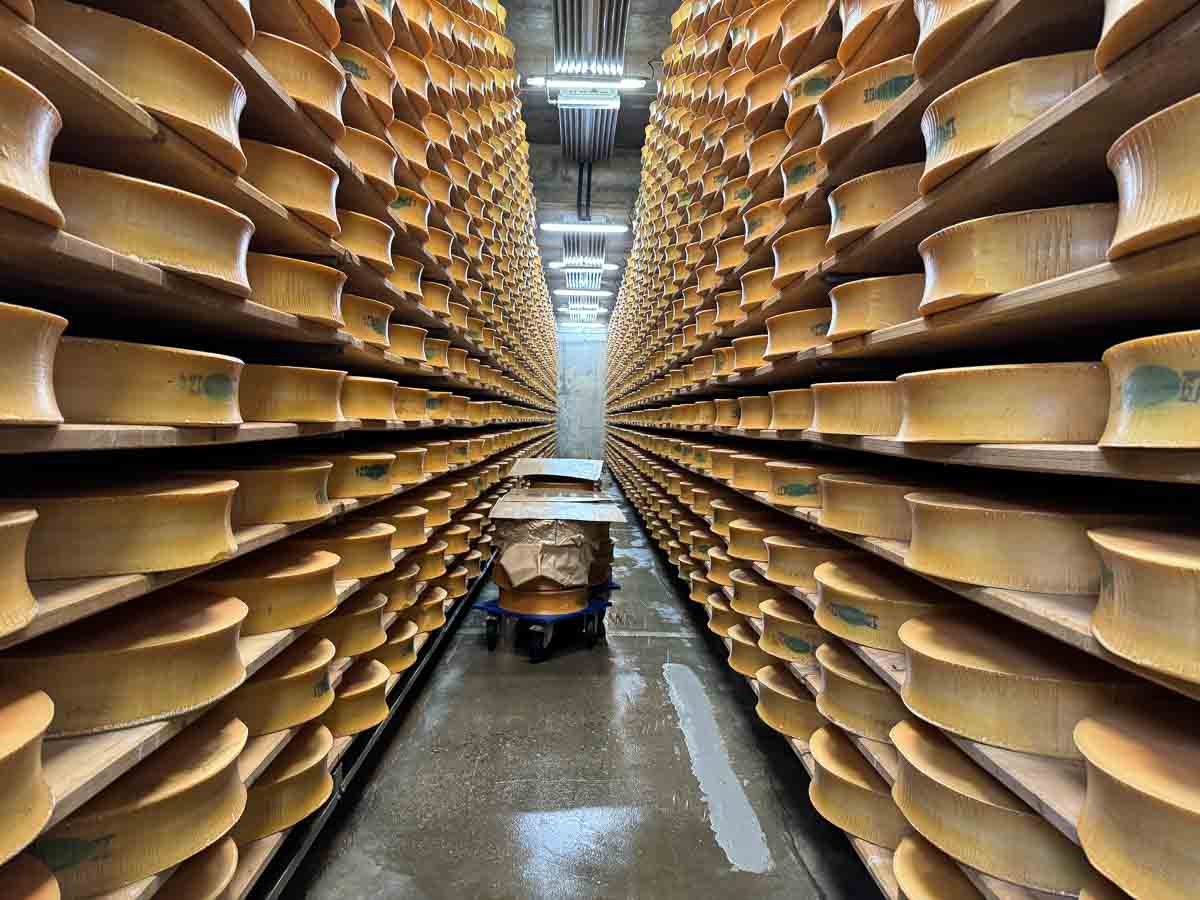
- We love the local Beaufort cheese. Cheese is the region’s thing. There’s a cooperative of cow farmers, a Val Cenis (Lanslebourg) dairy where it’s produced, which you can visit, and a fromagerie (though it’s available in many local shops and supermarkets) selling some of the 11,000 enormous wheels made annually. The much-esteemed Beaufort hard cheese is known France-wide for its sweet and nutty flavour and creamy texture, and is featured on pretty much every menu in the valley, alongside the two blue-cheese counterparts, the Blue de Bonneval (blue-veined, mild, creamy) and the Bleu de Termignon (France’s rarest cheese, produced on four local farms above 2,300m – think grainy-textured, and explosive-flavoured).
- No lift lines, anywhere.
- Plenty of off-piste and backcountry skiing to seek out, and barely anyone to share it with.
Cons
- It’s not your party resort. At après-ski time, there are a handful of relaxed options throughout the valley, some with terraces and live music, but a reliable late-night bar or hub for after-dinner drinks is harder to find, especially mid-week. But you know what they say: there’s always somewhere, if you look hard enough…
- There are few challenging pistes, anywhere in the valley; experienced skiers should look for kicks off the trails.
- Flat trails that reach the valley are tricky for snowboarders.
Pro or Con (we’ll let you decide)
- Variety: As long as partying isn’t part of the agenda, there’s plenty to discover in the Haute Maurienne, both on and off skis. But you have to be prepared to travel up and down the valley for it. Consider it an entire valley you’re visiting and exploring, rather than one small resort, to avoid getting bored.
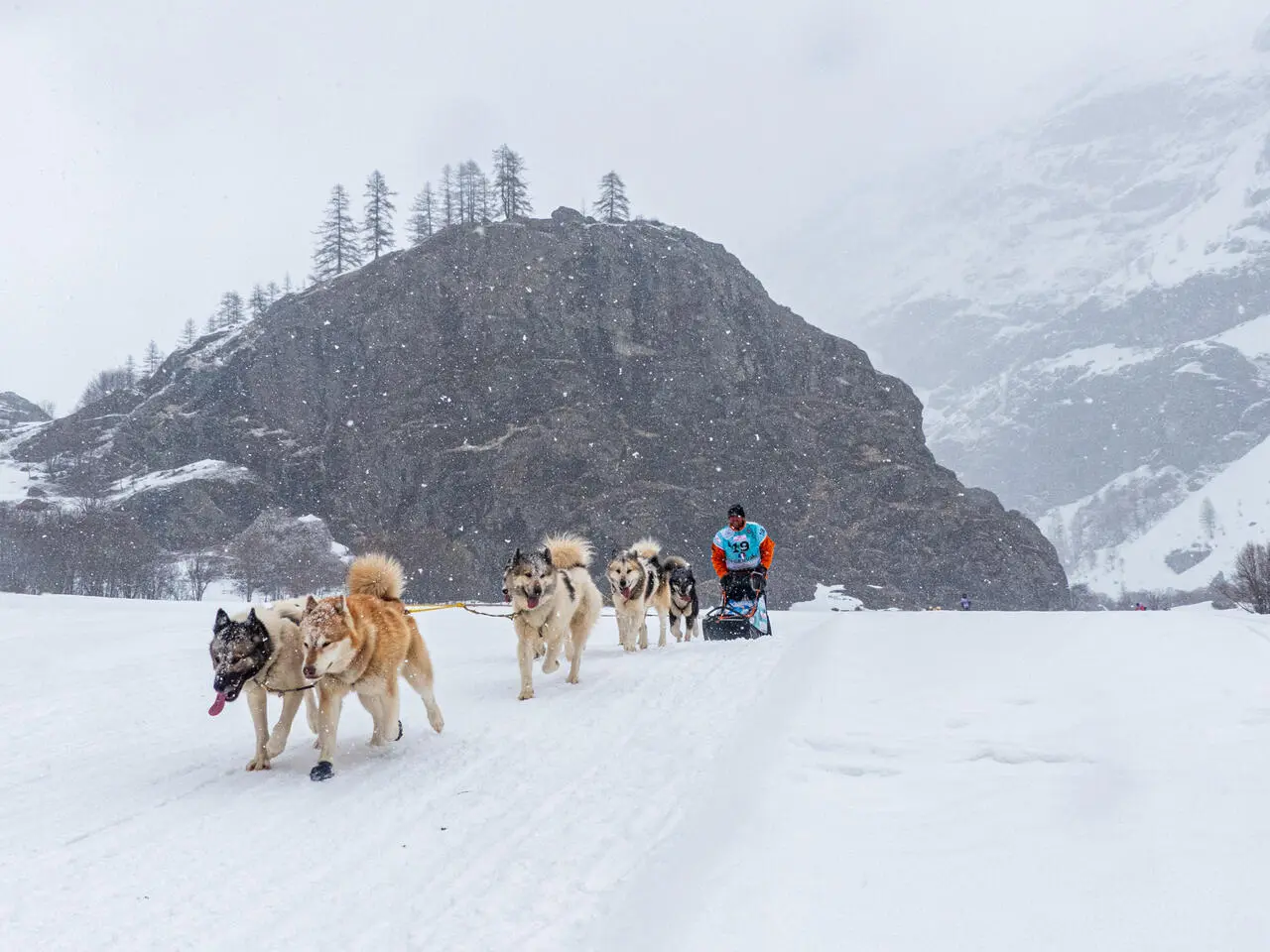
An Overview of the Haute Maurienne
Why not pick an entire valley for your next ski holiday, rather than a single ski resort? And make it the Haute Maurienne, with six ski areas and a long-standing reputation for good value
The Haute Maurienne is popular among French families, though British company Peak Retreats has a stronghold here for skiers looking to book accommodation.
There are 10 villages dotted along the Haute Maurienne valley, but if you’ve come to ski, which we’ll assume you have, then you’ll probably be staying at one of the six ski resorts, totalling 350km of piste (which is more than Tignes, Alpe d’Huez, La Plagne).
The Haute Maurienne resorts: Valfréjus, La Norma, Aussois, Val Cenis, Bessans and Bonneval-sur-Arc.
The road through the Haute Maurienne valley is very Alpinesque, starting from Modane – the valley’s gateway town with an international train station – with many twists and turns at the start, and ancient forts sitting high up on rock stacks with gaping gorges between the castles and you and the road (- most are open to visit (see Aussois, below)). The landscape is wonderful; you’re entering the Vanoise National Park. The Haute Maurienne valley is on the French-Italian border, sandwiched between the Tarentaise valley to the west and the Susa valley in Italy to the east.
In winter, the valley is a dead-end, making for ultimate peace and quiet, the villages growing smaller, quieter and more traditional as you reach the valley’s head. During summer, high-mountain passes connect to Val d’Isère to the northwest (over the Col d’Iseran), and Italy’s ancient Susa valley by the Col du Mont Cenis, though the Frejus tunnel takes out the need to go up and over the latter (but beware of the €71.60 one-way cost). Gran Paradiso in Italy’s Aosta is just 20km to the northeast from the head of the valley as the crow flies.
At the end of the war, Germans left France via the Haute Maurienne valley, burning villages as they went. The result is that the lower half of the valley was rebuilt in the ‘50s in rustic French style. They’re perfectly handsome villages, with high streets of boulangeries, pharmacies, cafés and restaurants; but it’s not until you hit the higher villages of Villaron and Bonneval (that avoided burning) that you realise what a shame this was. So charming are the stone chalets with larch roofs, the narrow winding lanes, and chapels, that these villages have been used as film sets in summer and are recognised among the most beautiful villages in France.
Haute Maurienne’s microclimate is something of a revelation (and a well kept secret). Situated between the northern and southern Alps, the Haute Maurienne benefits from weather patterns from both directions. However its main weather comes from Retour d’Est. Like anywhere, it can be feast or famine, but the narrow valley and high-altitude pretty much guarantee snow. In 30 years there’s never been a time where there’s been more than 20% of slopes closed, which is pretty good regarding the winters of late. Mid-to-late March, it’s not rare for roofs to be loaded with snow, piles of it lining the roads, with skiing going strong until the end of April. (And don’t forget about that bad weather insurance, in case it does…).
For such a rural region of France, it might be a surprise that Haute Maurienne’s 9,000 inhabitants are relatively young. In Bonneval, for example, 75% of its inhabitants are under 35.
Haute Maurienne Resorts in a Nutshell
Valfréjus
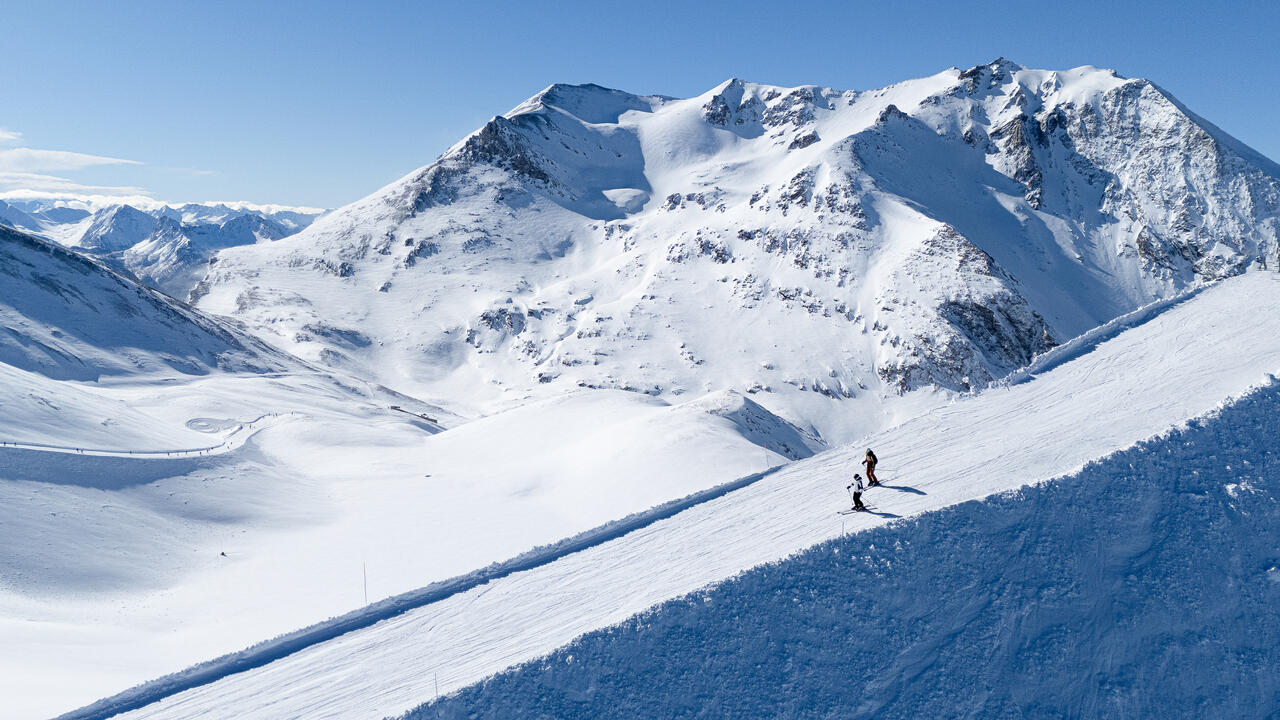
A young crowd and freeride playground
The first resort in the Haute Maurienne situated nearest the mouth of the valley, Valfréjus has 70km of piste catering largely for beginners and intermediate skiers and snowboarders, but is also famous for freeride, recognised by those in-the-know as an empty freeride haven, it being a stop on the Freeride World Tour qualifiers.
Valfréjus is easily accessed by bus, closest to Modane, 10 minutes by road, and has plenty of affordable accommodation in its ‘80s-built village that, thanks to its new-ish design, is mostly ski-in ski-out.
And for all this, Valfréjus has a younger crowd, with plenty of students, and some of the most lively après in the valley at Rock n Beer among other pubs.
Valfréjus has modern lifts, with red and blue runs dominating the ski map in equal measure, a big skiable vertical of 1,200m, and a majority of north-facing slopes. The 12km blue Jeu run is notable, from the mid-mountain Envers Col lift to town along a wooded, scenic route, but snowboarders beware…
Valfréjus and La Norma, closest in proximity, buddy up sharing a ski pass, which is good for both, as a day (maybe two) at each resort is plenty.
Evening activities in Valfréjus might involve the Bob Park – a 2km toboggan run with its banked turns and tunnels. The electro Vertical Music Experience festival comes to town once a year – a small but sold-out local event for the Haute Maurienne.
La Norma
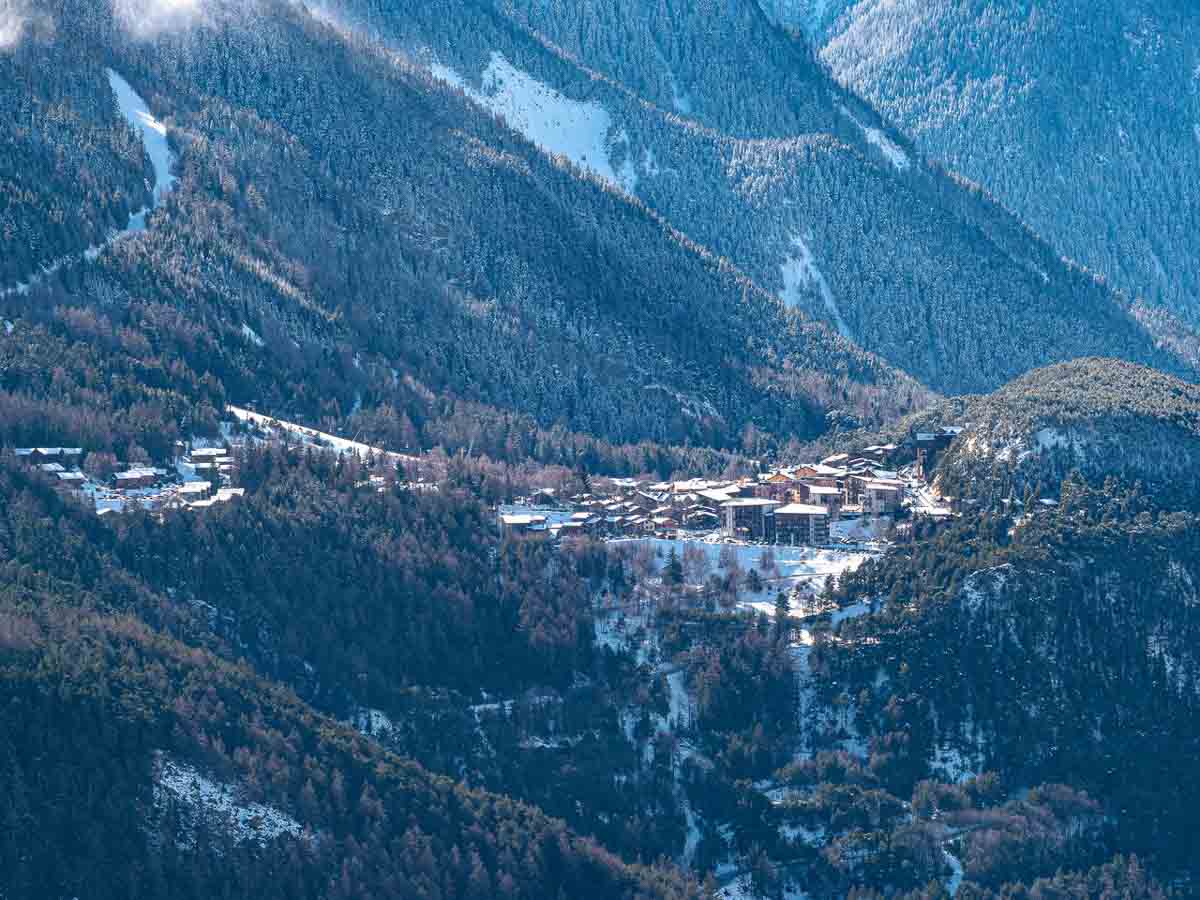
Plenty of beginner-friendly, north-facing terrain, reliable snow, and a small, friendly village
La Norma positions itself as the place for little learners, with a café and sunny terrace to the side of the slopes for parents to watch as young ones lap the beginner’s lift by themselves, in eyesight. And while it is excellent for beginners, that’s not all it is.
With a majority of green and red runs (lacking many progression blues), it really is the place for kids in ski school and their ski-competent parents. From mid-mountain up, red runs dominate, with easy-to-access-and-navigate off-piste ski terrain that’s anyone’s for the taking – no fighting for first tracks here. Lifts Clot and Norma II reach the heights of the resort, with a modest 750m of skiable vertical and plenty of variety, with open bowl skiing and glades. There’s also fantastic, extensive tree skiing out of the official resort boundary, for those looking to explore unchartered terrain. A small mid-mountain snowpark sits skier’s right in the resort.
La Norma’s ski pass is interchangeable with Valfréjus’, though a six-day pass will get you the entire Haute Maurienne access benefit of one day at each resort. The resort itself is small, and quiet after ski hours.
Aussois
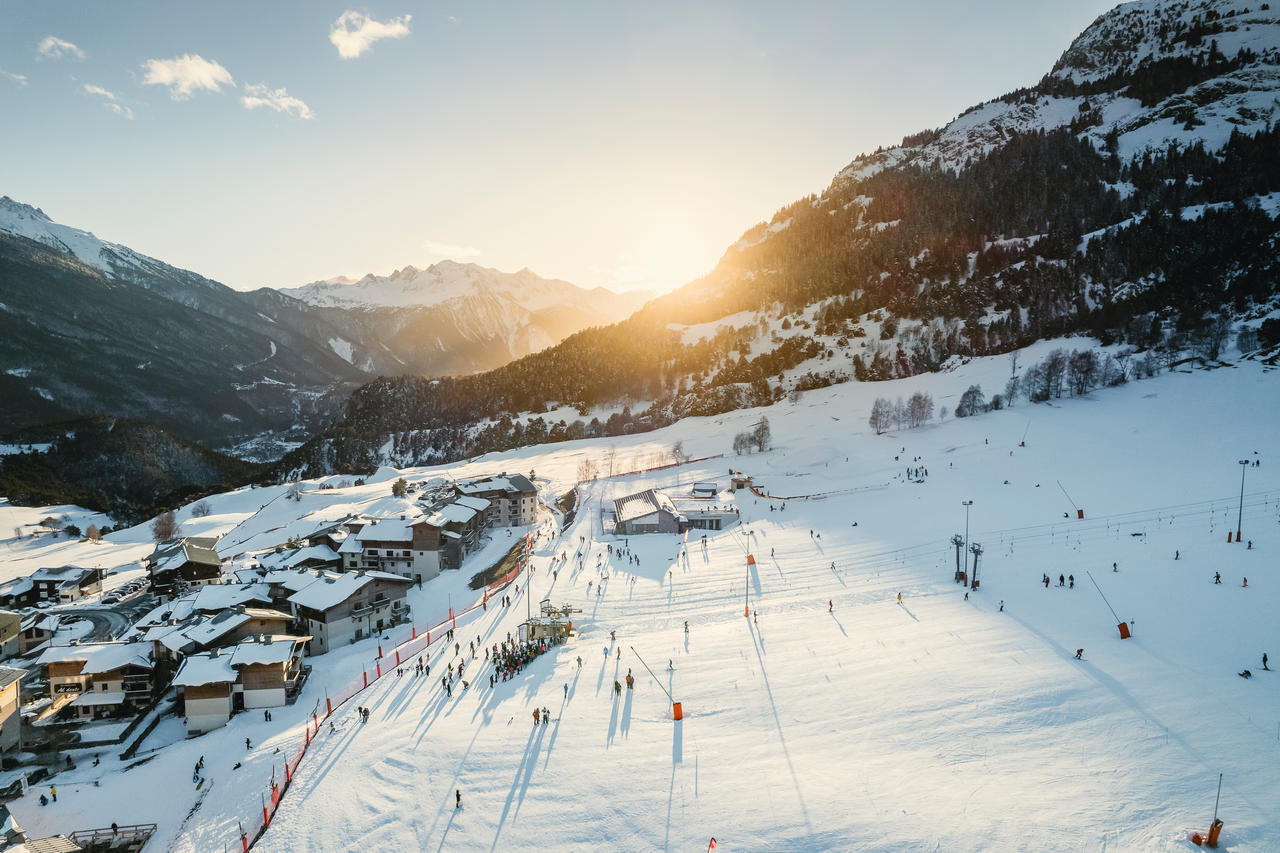
An affordable family ski spot with plenty of sun and history
Its south-facing slopes are ideal for sun-loving, fair-weather skiers, but snow can become affected late afternoons and during warmer weeks. The views are sensational. There are 55km of runs in Aussois, the highest altitude reaching a mega 2,750m, plus 39km of Nordic trails above 1,500m. The beginner’s area is found at the foot of the slopes, above a respectable 1,500m (plenty high enough to hold snow well), while intermediates will enjoy the top-to-bottom runs over 7km and 1,250m of vertical.
Off-piste skiers should head for the Balmes area, a short hike up from the top of Fournache chair at the top of the resort, with a marked itinerary run for safe off-piste skiing and riding. Snowboarders beware of a relatively flat exit…
Off the slopes, Aussois village is traditional Savoyard, centred around a square with a fountain. Just 10 minutes’ drive away are the five Esseillon forts, with family treasure hunts, via ferrata routes, exhibition areas and restaurants.
Parapente is big in the area, taking in the big Vanoise views, while on the ground husky racing is a favourite sport, with Aussois’ local ‘musher’ and huskies available to visit and ride with.
Val Cenis
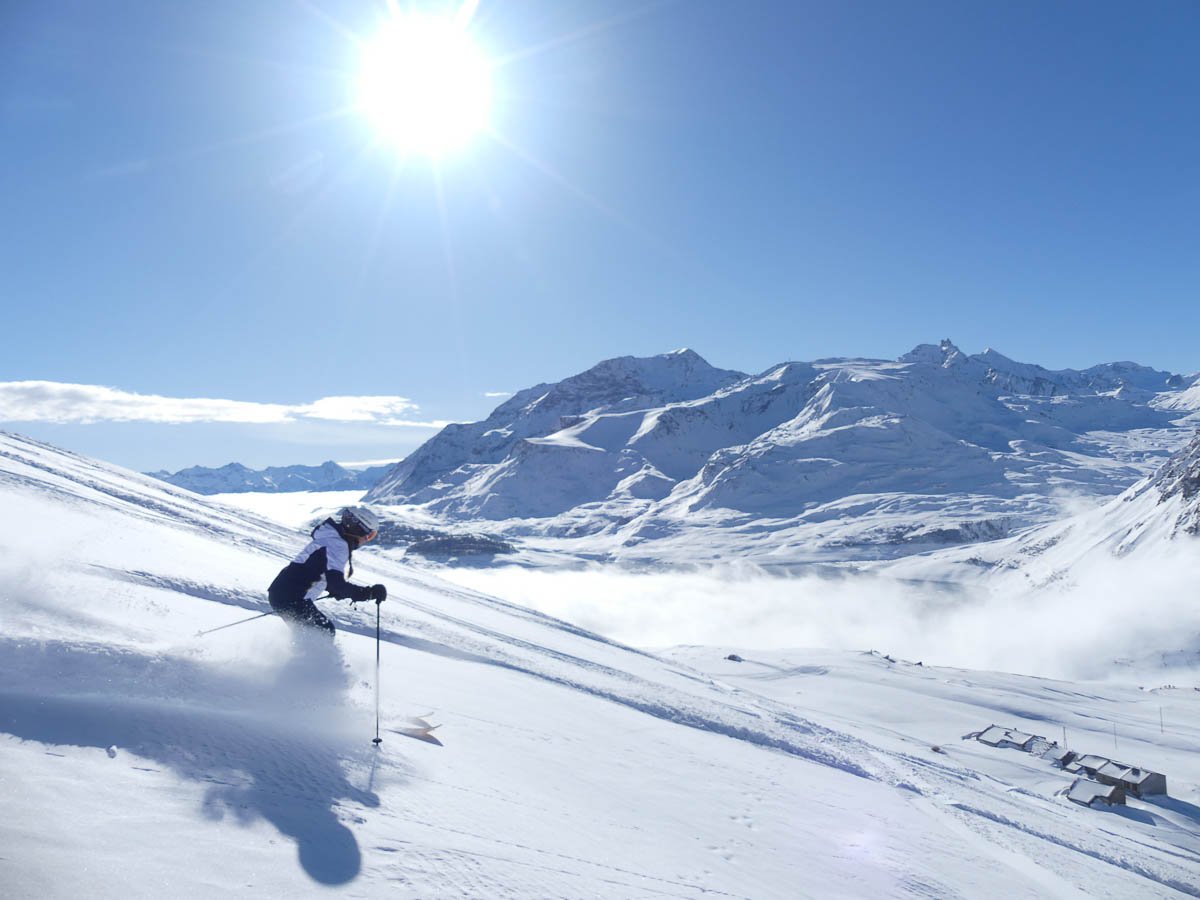
A friendly French resort and the Haute Maurienne’s biggest ski area with big appeal (for every skier)
Located 23km from Modane, this is the biggest ski town and ski area in the Haute Maurienne valley, with 125km of ski runs and five interconnected villages: Bramans, Solieres Sardieres, Termignon, Lanselebourg and Lanselevillard. The latter three are all ski base stations, with lifts to boost skiers and snowboarders onto the ski slopes, Lanselebourg being the biggest.
The whole of Val Cenis ski area is pretty much north facing, meaning decent snow sticks around for longer, making it ideal for late-season skiing.
On the far skier’s left of the ski area is Cugne, a north-facing freeride mountain rising above the ski area, wide-open and prone to avalanching, but carefully patrolled. L’Ouillon face of Mont Cenis is a lovely steep, featureless off-piste section above Arcellin, with a 300m vertical drop.
There is endless tree skiing, great for white-out or stormy days with plenty of tree cover. One of the most beautiful tree skiing areas is again far skier’s left, which two soon-to-be-updated drag lifts serve – it offers mellow pitched, tight-packed tree skiing at its best.
For more information on Val Cenis, read our in-depth resort guide
Bessans
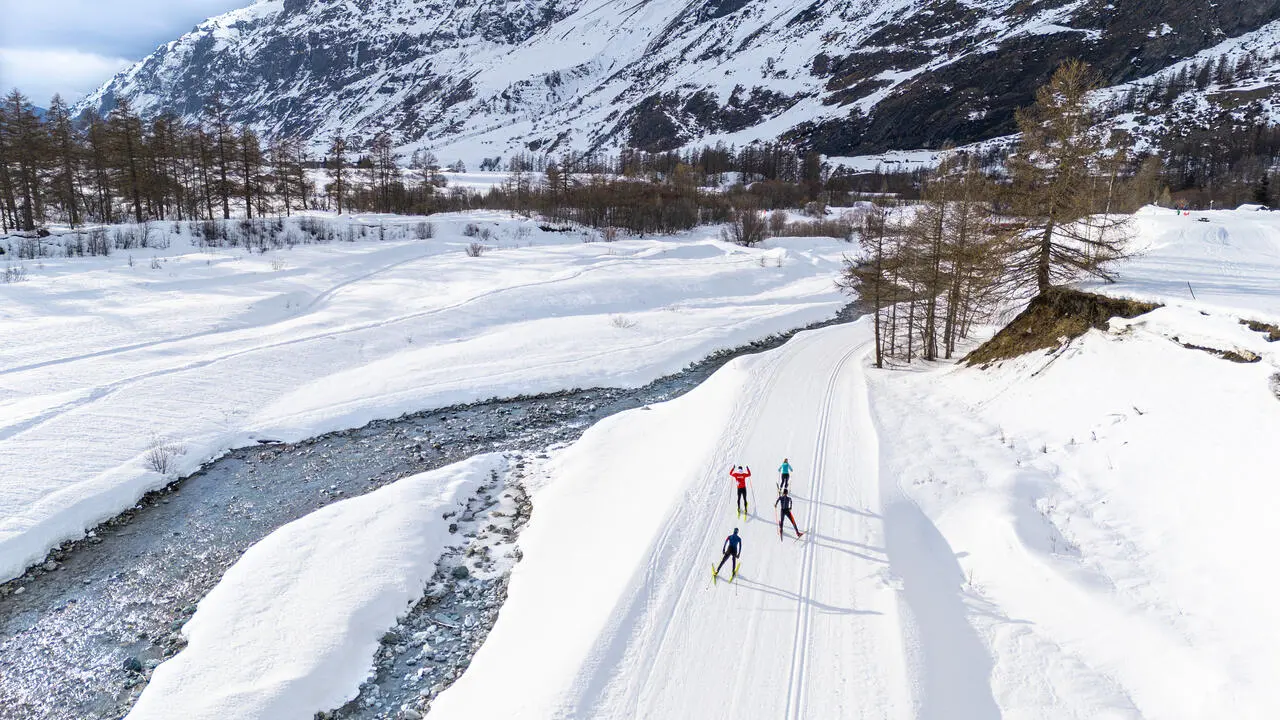
An internationally known cross-country haven in beautiful surroundings
Bessans is famous for its 120 kilometres of cross-country ski trails at 1,750m in altitude, and international biathlon stadium, including a 400m track with 30 targets and a 2,500m course. Across the main road dividing the narrow valley in two, there are also two ski lifts (one long drag lift, and one baby drag lift) and three downhill ski pistes (two long blue, one learning green) that are south facing for a quick, sunny run or two.
But back to the cross-country and biathlon that’s Bessans’ main draw. The atmosphere on the trails in Bessans will make you consider switching your ski discipline, alive as it is with all kinds of visitors. It’s well used by athletes in training, as well as locals getting in their miles and holidaymakers learning the sport. A private session, introducing biathlon, with ESF, costs €88 per hour, whether the group is one-strong or ten-. That includes an intro to the method of cross-country skiing (skate or classic), as well as time at the shooting range, and is an afternoon very well spent.
The winter walking trail network links Bessans village to Bonneval, further up the valley, with more trails in the other direction down towards Aussios.
For an evening snowshoe or walk, and a goggle at jealous-making cosy chalets in a secluded alpine hamlet, Le Villaron is picture perfect. There are no shops in its snowy, winding lanes, but there are two tiny chapels and a village bread oven. You can find an alpine refuge-B&B here though, for comfortable stays in shared rooms, with the current guardian serving up simple but five-star food – local blue cheese, melted in a bread roll-bowl, served with bacon-wrapped potatoes. The only catch is you have to be a guest to experience this local cuisine.
Bonneval-sur-Arc
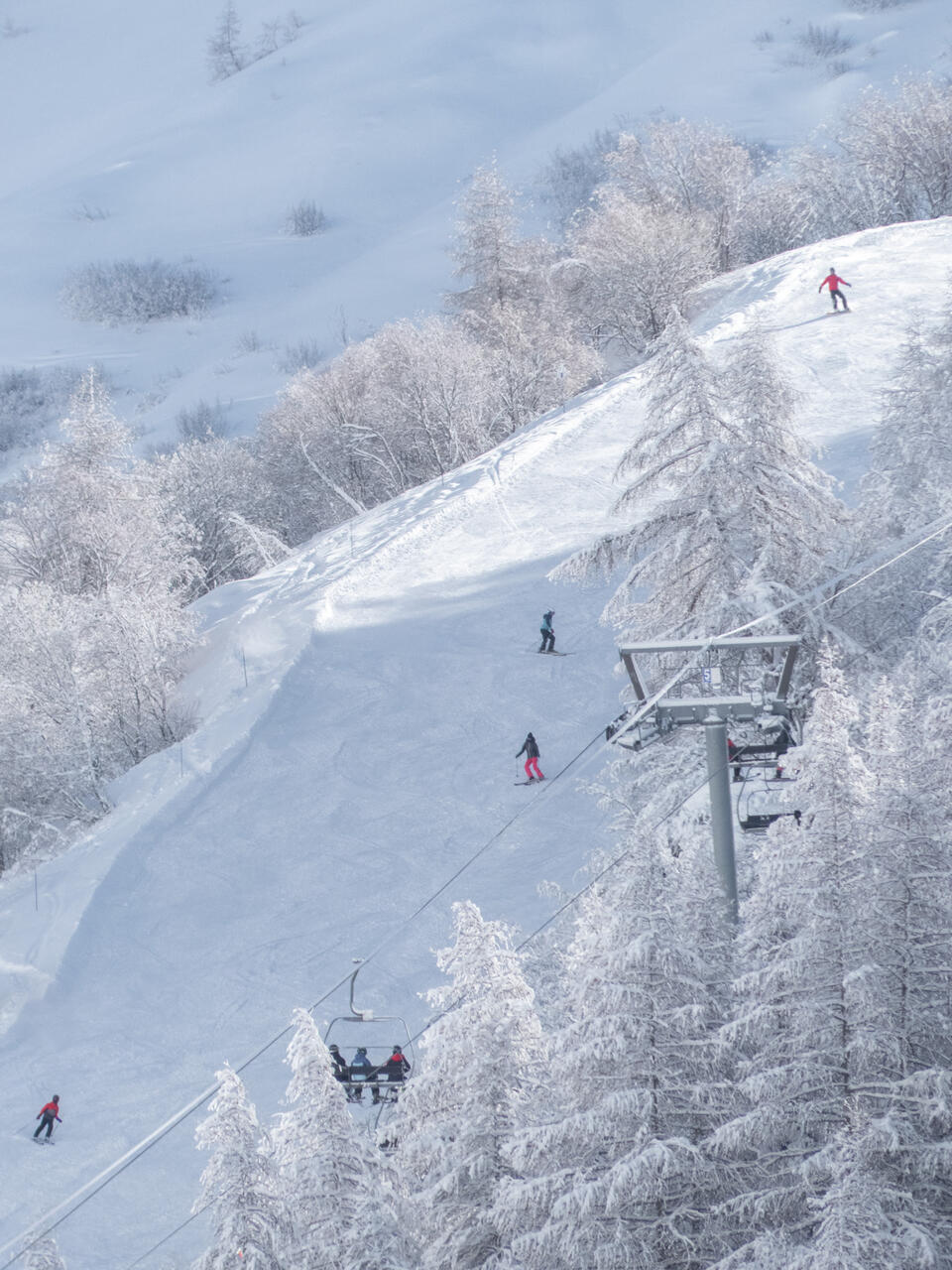
High-altitude skiing (up to 3,000m!), a selection of pistes over 1,200m vertical, zero queues, receiver of big snowfalls, a backcountry haven
This is ski mountaineering territory, some say in the same realm as Chamonix or Cauterets. But as a tiny village, it gets little attention. There are six main lifts serving just 25km of piste, with challenging blues and reds sitting at the top of the resort (and gentler skiing lower down, plus three novice areas) that are drenched in sunshine. It mightn’t have ever been developed further, as intended, but it’s from these high-altitude Bonneval chairs and pomas that superb lift-accessed backcountry is possible. Bonneval (as well as Valfréjus) hosts an annual Freeride World Tour qualifier stage, and is known among the freeriding elite for easy-access backcountry skiing. It helps that there’s often plenty of snow here in mid-March when the Tour comes through…
But the backcountry here is not only good for freeriding and extreme skiing. A morning ski tour (suitable for first-timers) from the top of the Moulinet drag (2,275m) takes you to the cave of Glacier Inférieur du Vallonet by way of an easy, low-angled skin along the old glacier bed (that should take about an hour). The ice cave is a serious reward – such is the spectacle – and following your tracks back to the pistes is an easy ski, with barely the need to turn it’s so mellow, perfect for new-to-off-piste skiers. The Freeride World Tour face overlooks the old glacier bed, if you fancy upping the ante and skinning up some steeper terrain for some proper turns.
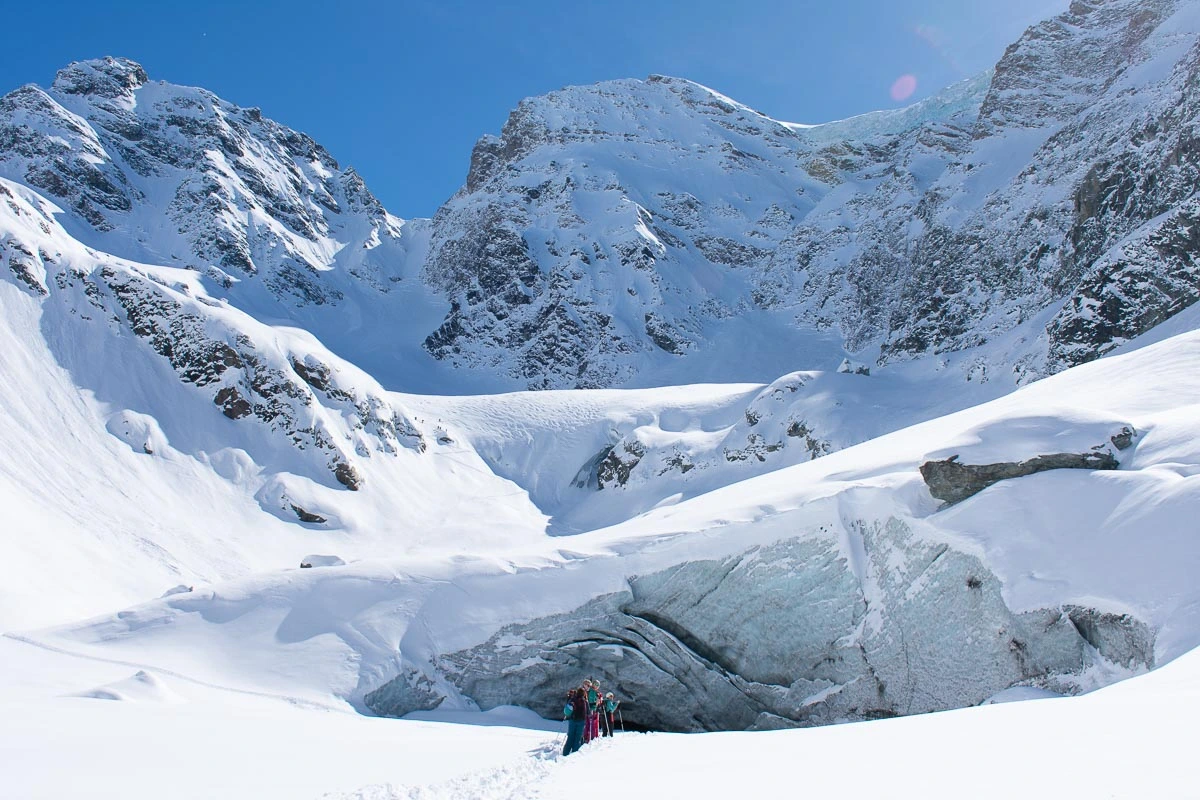
Bonneval, alongside Bessans, has been awarded the Terre d’Alpinisme label by UNESCO and is a veritable ski touring and freeride haven, suitable for beginners to the uphill sport. For three more touring itineraries, check out ski mountaineering athlete and local resident Thibault Anselmet’s favourite here. And then there’s Albaron, a peak at 3,637m overlooking the Bonneval area, with single-day tours and freeriding descents to boot.
Bonneval’s ski base area is a bit of a (not-uncharming) mess, with several (free) carparks and the Vallonet ski lift rising from just above the parking. Getting on the Vallonet chair can be tricky, with no real ‘get-ready’ zone to put on skis without being in the way of other skiers finishing their runs, but once you’re locked, loaded and safely seated on the upward trajectory, it’s smooth sailing.
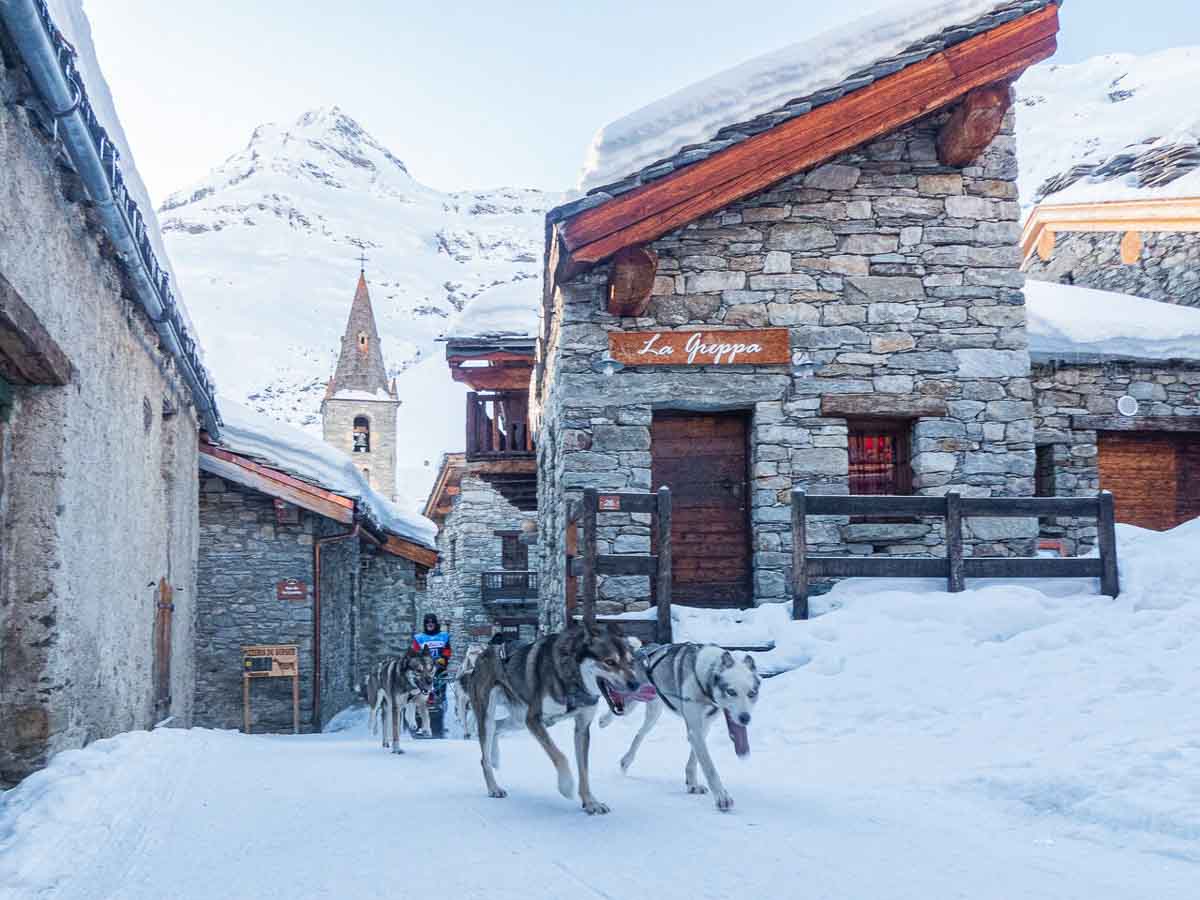
The old village of Bonneval, a few hundred metres down the road from the ski base, is small and as cute as they come – so charming it’s been given a French award – with its original stone buildings and unique slate roofs ranking among France’s most beautiful. Narrow, snowy pathways wind between the village’s buildings, with a surprising number of cafés and small restaurants packed in. Accommodation here is mostly privately owned, and highly sought after.
Also technically part of Bonneval-sur-Arcs is the remotest hamlet of all. Écot sits at 2,000m in altitude – a true mountain treasure. With the road cut off in winter, it is accessible by foot, snowshoe or ski tour, but you can visit more easily in summer. Piedmontese shepherds settled here in the 5th century, but since 1960 the hamlet has been pretty much abandoned in winter, and has been the setting of one or two French films.
Where to Stay
Well-priced self-catering apartments you’ll find aplenty in Val Cenis Le Haut.
The four-star St Charles Hotel & Spa is the main (and only 4*) hotel in the Haute Maurienne, located in the Lanselebourg section of Val Cenis. There are other smaller family-run hotels and B&Bs to stay at, but the St Charles has most to offer and 83 rooms. Newly decorated and modern in style, the beds are big, the Pure Altitude spa is excellent, the breakfast spread is more than impressive, and it has a ski rental shop and several sunny après terraces attached to welcome you back at the end of the day (it’s ski-in ski-out, so you can slide right back to the door). A short 5-10-minute walk away is what could be described as the centre of Val Cenis – a spread out resort with three main areas – with a high street featuring plenty of restaurants, pharmacies, boutiques and sports shops. Costs from €139 to €349 per night, for a double with breakfast (for up to two people).
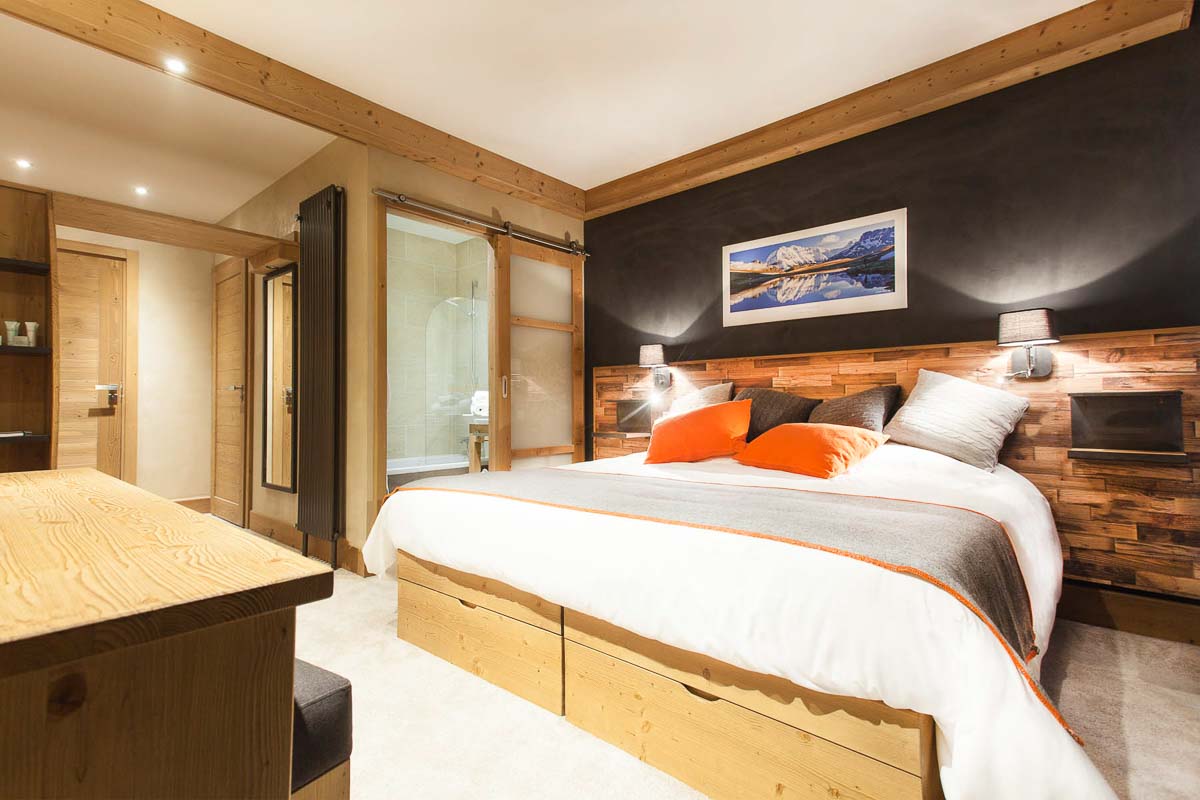
Perfect for a group of friends is Le Relais des 2 Cols in Val Cenis Lanslebourg. With a popular all-things-cheese restaurant attached, the hotel is lively (for Haute Maurienne) during the evenings, popular among locals. Rooms-wise, it’s only been half refurbished, which means there are excellent-value bedrooms to stay in, especially for friends, sleeping four in the not-done-up section for around €90 a night (per room), if you don’t mind sharing.
Tiny two-star Hotel la Vanoise in Bessans offers simplicity and solitude, come evening, in the heart of the Parc de la Vanoise.
Chez Mamie Anna B&B in Bessans has doubles from £134.
If you want something truly special, then booking well in advance for the tiny, authentic houses in one of the upper villages will offer a luxurious option – luxury not akin to five-star accommodation, but the real luxury experience of secluded alpine digs.
Gite de la Batisse in Le Villaron is relaxed, refuge-style accommodation in the quiet, almost secluded, hamlet near to Bessans. At €36 per person, per night (€42 including breakfast), it’s a steal, and would be a great place to take over with a group of friends who want to hang out in the dining area with no need to go out.
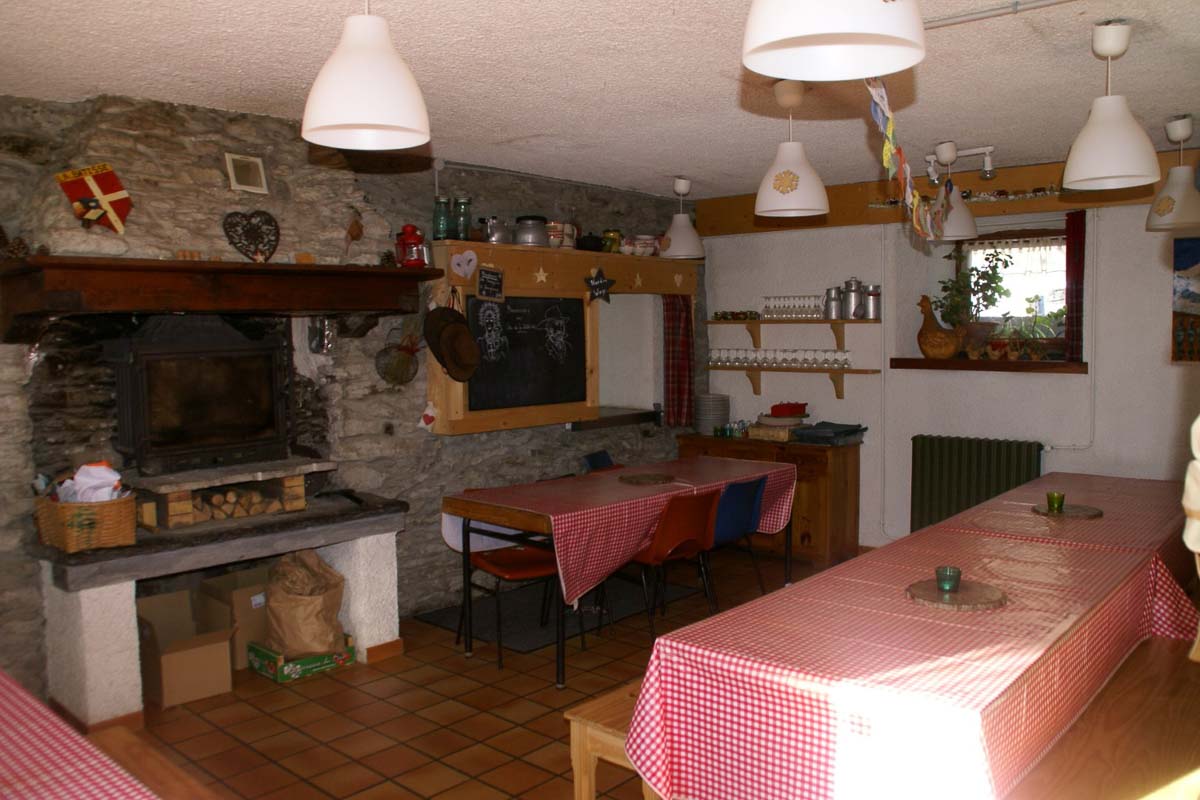
Where to Eat
On the Mountain
Worth centring a ski day around is Val Cenis’ l’Alpage d’Augustin. Located in a refurbed stone chalet, mid-mountain (on blue piste Tetras accessed by the Mont Cenis drag lift or Arcellins chairlift) you’ll find a modern, chic setting and a huge menu featuring local (cheese-based) classics, modern plates (poke bowls, pulled pork burgers, salmon tartar with chips and salad) and everything in between. Plus an extensive wine menu. Careful though, so comfortable is it, it’s easy to spend too long here at lunch at the expense of an afternoon’s skiing.
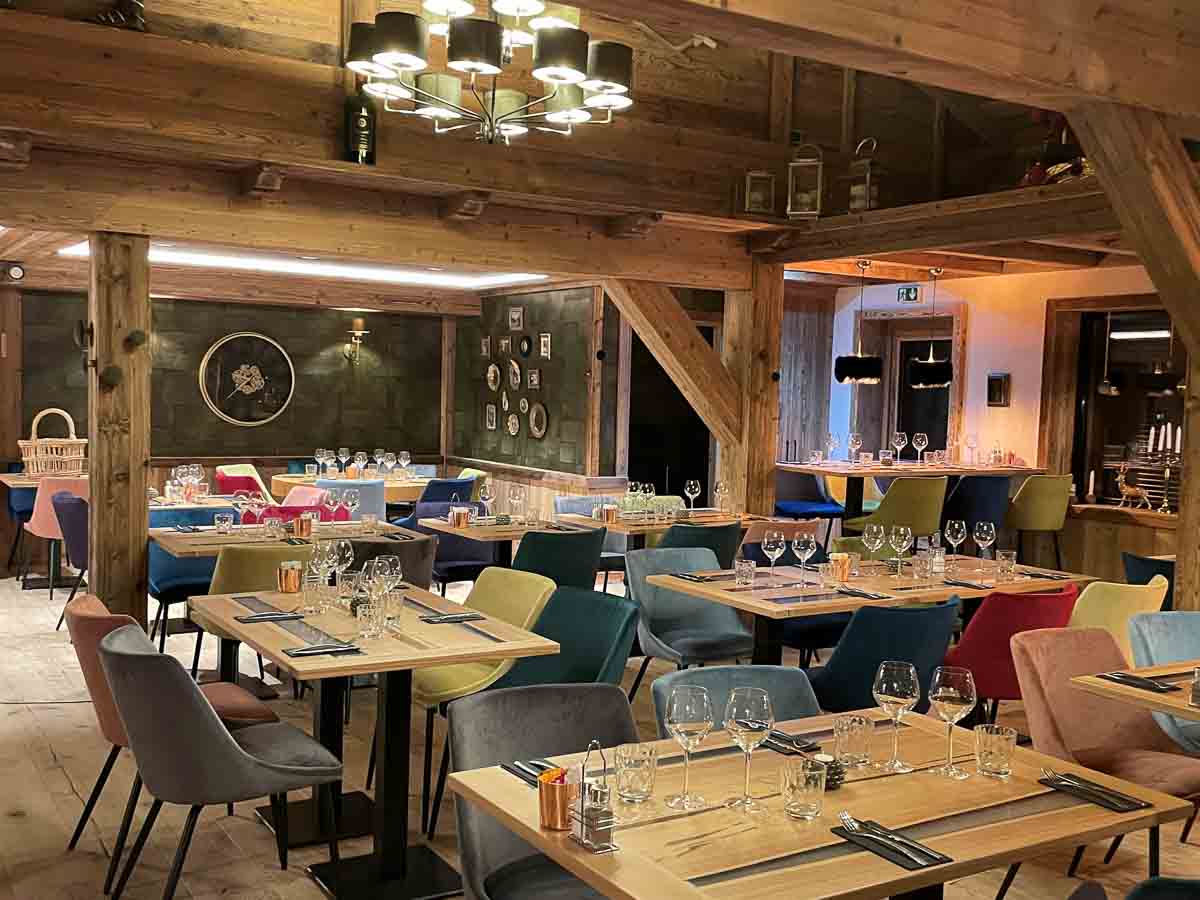
In the Valley
Full of French, who likely have made the trip here just for lunch at Bonneval’s La Cabane, the menu is almost exclusively all things cheese (though a vegan gnocchi does feature); ceps fondue Savoyarde (highly recommended), raclette de reblochon, tartiflette done right, followed by enormous puddings served in a tiny rustic dining room (that should be booked ahead). 04 79 05 34 60 | 06 07 70 90 55 | 06 63 84 19 16
For such a small village, Bonneval is packed with excellent restaurants; Auberge d’Oul is perfect for a sunny lunch in the village’s central square.
La Turra restaurant in Val Cenis-Termignon comes locally recommended, if you’re in the mood for a slap-up meal. Sabot de Venus is excellent too – also in Termignon – for a similarly gastro menu. (Remember this is rural, ski-town France, so while it’s fancy for the area, it’s not too smart or exclusive).
Le Pontet delicatessen in Bessans is well worth a visit if you’re self-catering. Being right on the Italian border, there are strong Italian influences on the culinary specialities in Haute Maurienne valley. The family-run deli produces coppa and pancetta, pork ravioli and Modane ‘bread’ – a pastry with almond cream, apricot jam and candied melon.
Where to Party
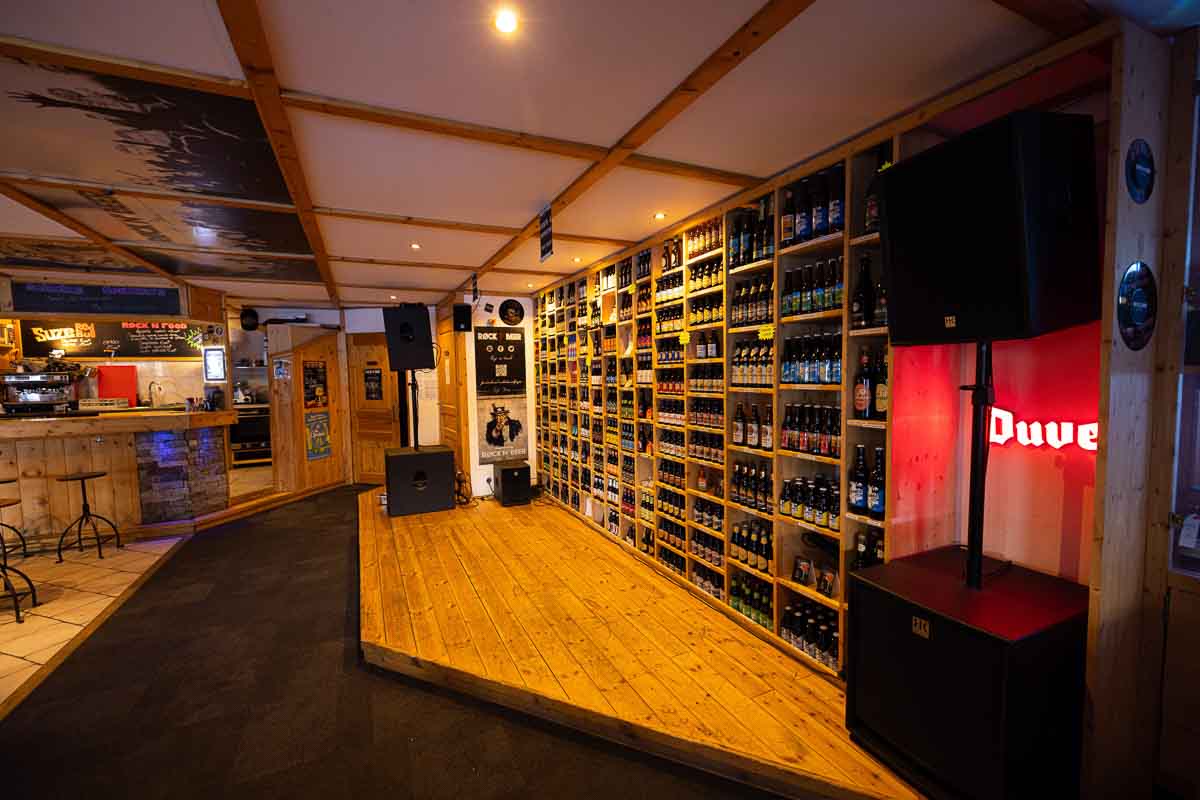
The short answer is nowhere. You don’t come to Haute Maurienne for the party. But, there are a few watering holes at après-ski time.
Two craft brew pubs have opened in the valley. The Brasserie des sources de la Vanoise in Villarodin-Bourget serves organic saffron beer (blond, amber and pale ale). Brasserie d’Oé in Aussios was set up by a patroller, guide and refuge guardian trio. Expect non-filtered, organic beer that uses local ingredients.
Le C2 bar and deck in Val Cenis Lanselebourg sits at the foot of the ski slopes, serving beer, wine and snacks, with live music regularly during après.
Rock n’ Beer – Darjeeling Club in Valfréjus is lively at après-time.
As the valley is already on the map for freeriding, it’s just a matter of time before the Swedes put a stamp on the Haute Maurienne, opening a befitting bar or club here – a la Alagna or Engelberg.
Nearby resorts include:
- Serre Chevalier (1h30)
- Vialattea (1h to French Montgenevre on the edge of the mostly Italian interconnected Vialattea ski circuit)
- Bardonecchia sits just 20km from Modane (45km from Val Cenis) over the Italian border
- And in the other direction 35km to Orelle, for backdoor access to the Three Valleys ski area










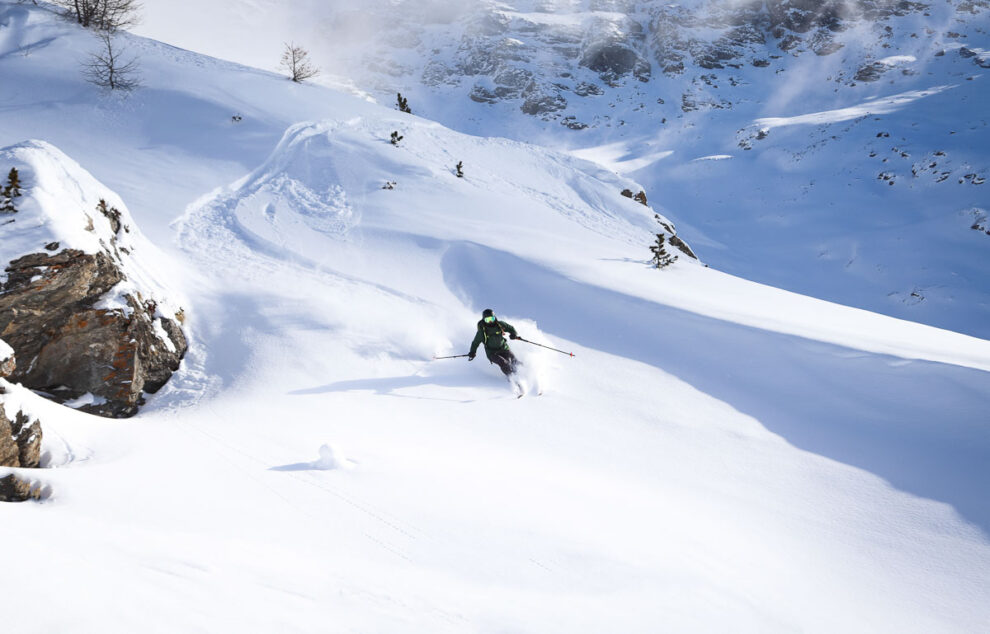

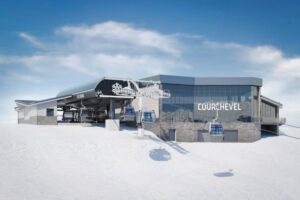
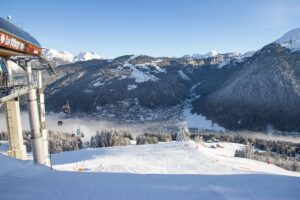
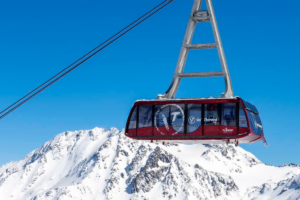
Add Comment